Submitted by WA Contents
Denton Corker Marshall embraces "function-first approach" with its industrial-like studio space
Australia Architecture News - Nov 19, 2019 - 16:14 5583 views

Australian architecture studio Denton Corker Marshall has completed its new studio in Melbourne, focusing on "an effective workplace" for its creative users, architects and designers.
Named Denton Corker Marshall Studio, the 976-square-metre office is spread over five small floors, with simplistic materiality, much more flexibility and metallic interior design that makes users feel like in a home-like space.
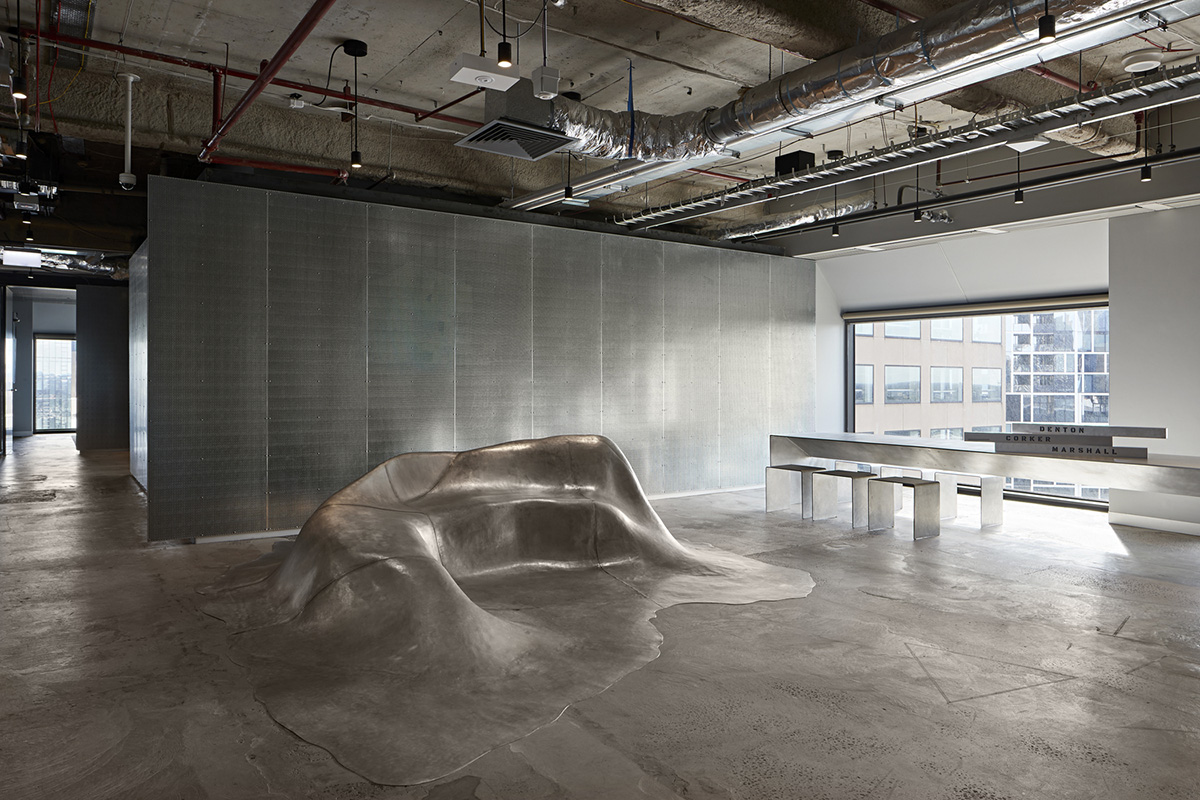
The studio is located at 49 Exhibition Street, Melbourne, and after 35-year experience, the studio wanted to grow in a new studio space by giving importance to functionality rather than traditional office spaces that are realized in recent years. The architects specifically wanted to avoid of "a corporate identity" feeling while designing this space.

"We needed a new contemporary workspace with high connectivity, high flexibility, and good daylight and amenity," said Denton Corker Marshall.
The studio is situated at Level 19 in the IM Pei classic modernist tower at Collins Place, which allowed the studio to consolidate onto a single floor.
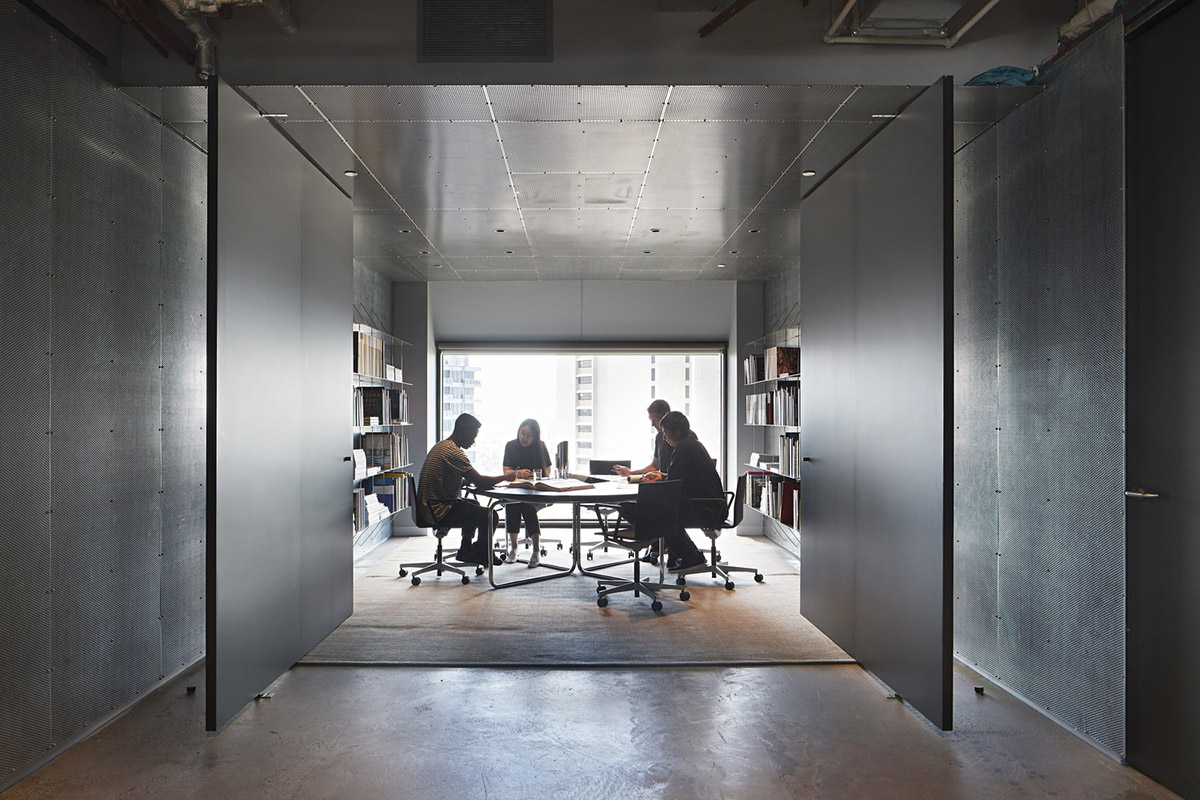
"We asked ourselves the question – how do you make a design studio out of a corporate office shell? The building offered a traditional, central core floor plate of 976 square meters, with great daylight from large framed windows, giving a decidedly non-corporate feel," the studio added.
"Much of our approach became about maximizing this amenity. Our studio reflects our practice and our approach to design. Disarmingly minimalist, direct, simple, robust and enduring."

Denton Corker Marshall Studio is designed as an expression of the studio's approach to architecture, the team try to strip back rather than add, to simplify rather than complicate.
The studio is predominately a working space, a workshop for the making of architecture and design, which reflects this hard-working aesthetic. The architects have condensed form and materiality to the minimum while maintaining collective and casual sensibility.
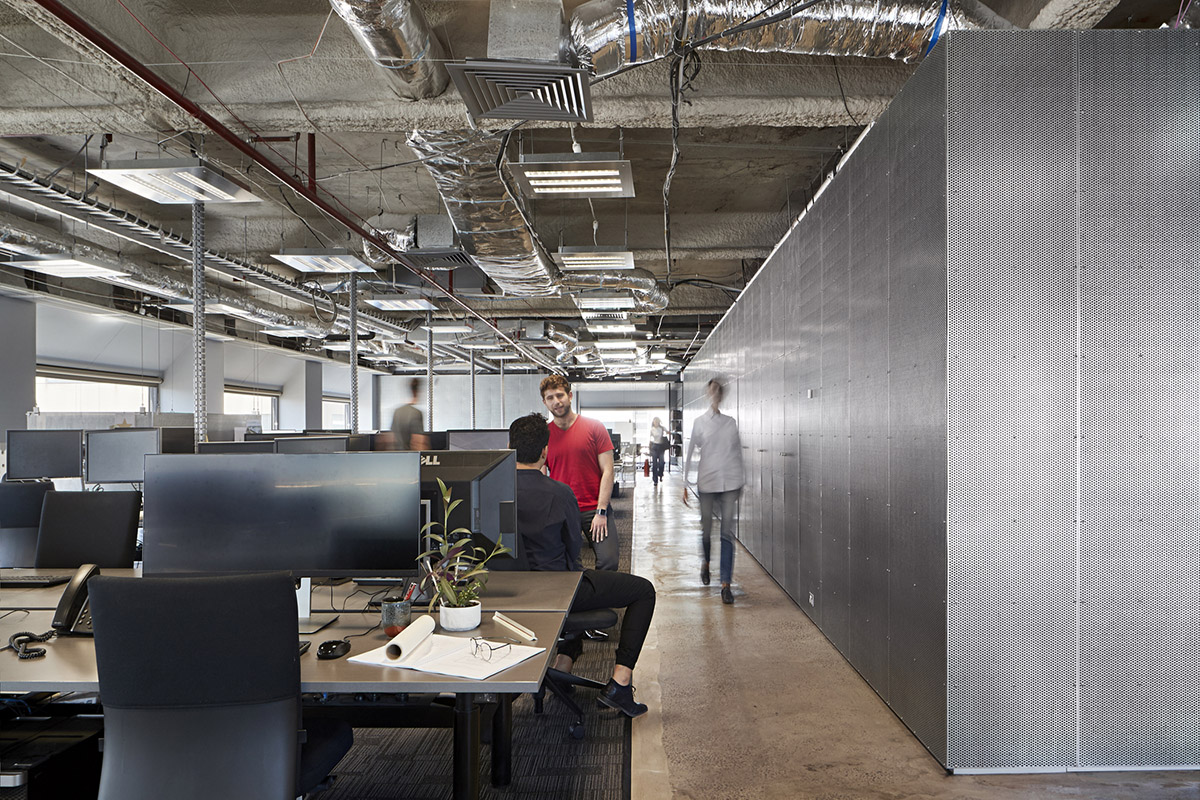
"The project is a result of an internal, continuously evolving brief. Firstly, we wanted to create a memorable entry instantly signaling the practice as a creative institution within a corporate tower," the architects continued.
The team removed a small lift lobby, welcoming visitors and staff directly into reception/gallery, and it was framed by perforated galvanized sheet walls, subtly revealing enlarged design sketches.
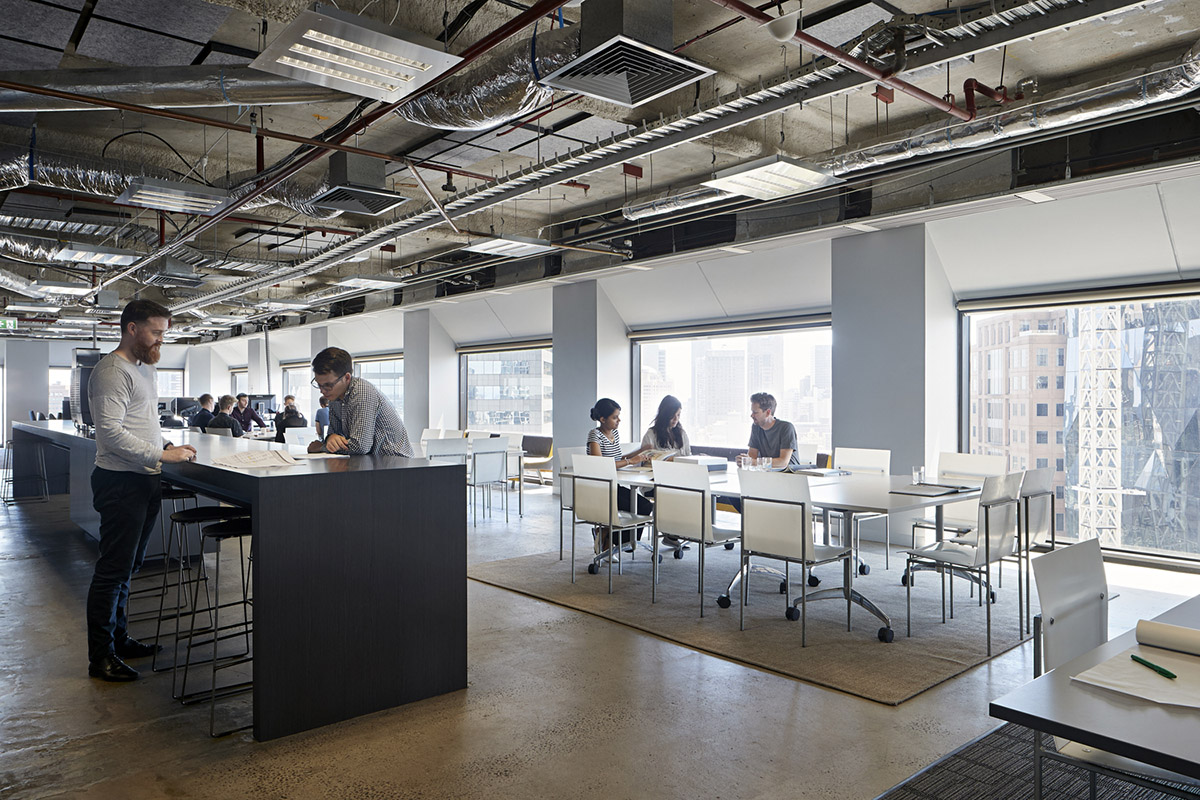
The centerpiece reception seat seemingly morphs out from the floor – is it furniture or sculpture? A six-meter singular span of aluminum forms a reception desk and informal meeting space. Large meeting rooms are immediately accessible, each maximizing the use of simple, large aluminum tables and focused on large, wireless-enabled displays.

The studio's brief for working spaces was simple. Maximize daylight, openness, amenity, utility, and open-plan workplace connectivity, while minimizing clutter and distraction.
Ceilings and floors are stripped out revealing the honesty of services and structure. Perforated galvanized steel sheet and burnished aluminum is the dominant material, reflecting daylight and enabling any surface to be used for pinup.

Functional utility spaces, such as kitchen, server room, model shop, printers, storage, and staff lockers, wrap the central core, accessible yet concealed. They wanted to create a great amenity for our staff. Sit-stand desks allow flexibility and encourage healthy posture.
A central hub breakout space with coffee machine unites staff. Flexibility allows re-configuration for lunchtime table tennis, functions and events. A central audio-visual display with wireless connectivity enables presentations.
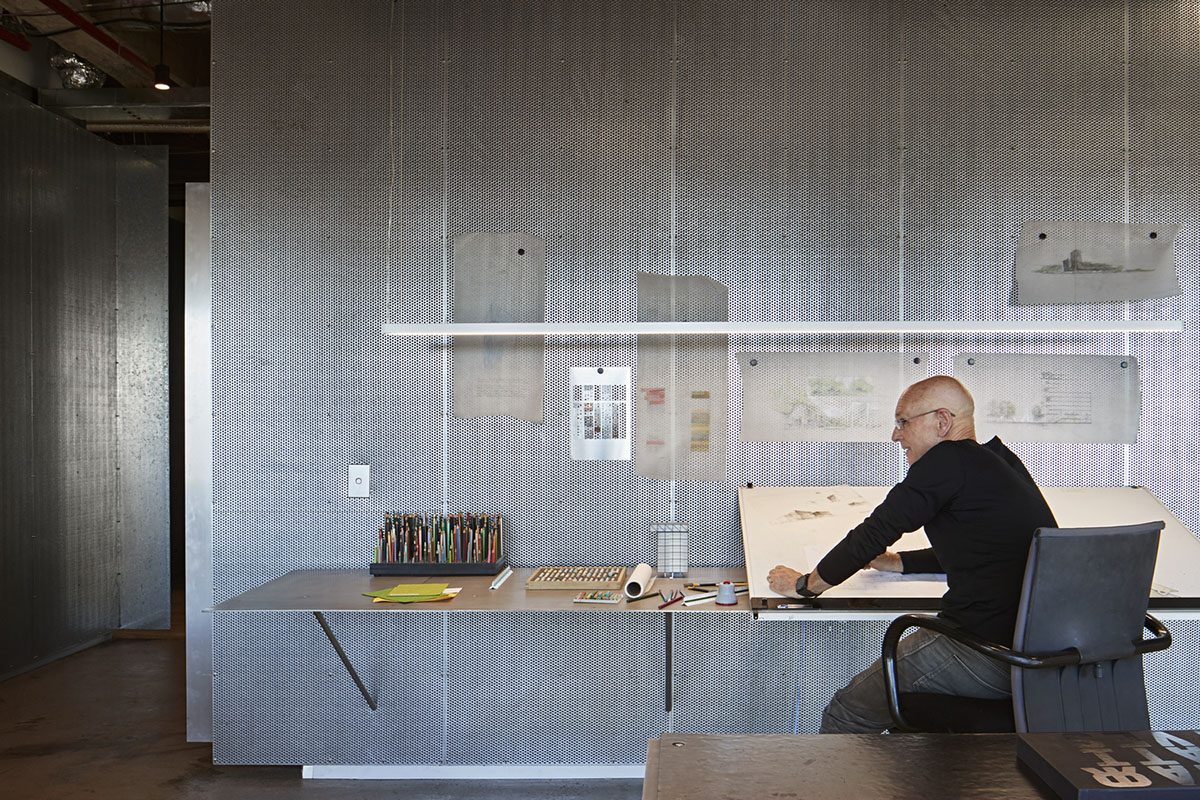
"Our overall approach is raw, stripped back, ultra-minimalist, rejecting current fashionable trends of warm, timber-lined, faux-luxury," the studio continued.
"We have worked hard to make this into something that reflects our design ethic and culture without excess embellishment, through Absolute rigor of stripping away and minimizing clutter and distraction."

The architects wanted to achieve hard-working and function-first approach to maximize utility and amenity. The reception seat is the stand-out insertion, a distinctive and memorable element. It is not an object of place on the floor; it is the floor itself – swollen and split.

Floor plan

Sketch
Project facts
Location: Melbourne, Australia
Architects: Denton Corker Marshall
Date: 2014 – 2016
Size: 976m2
All images © Shannon McGrath
All drawings © Denton Corker Marshall
> via Denton Corker Marshall
